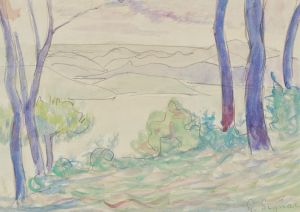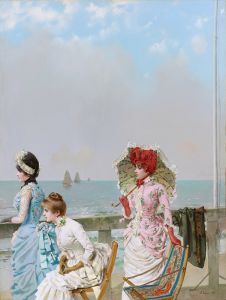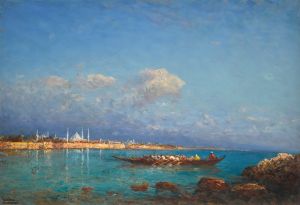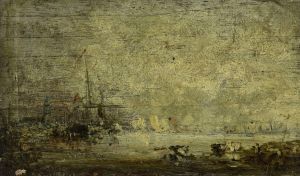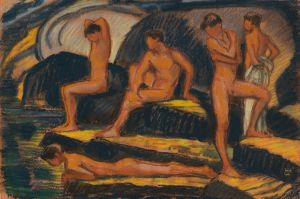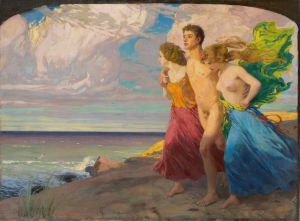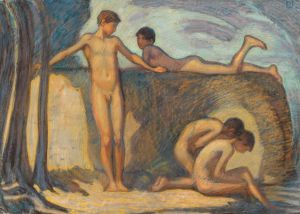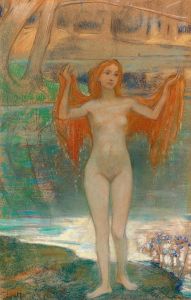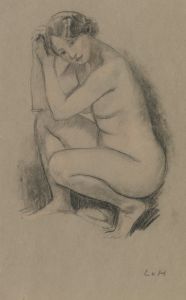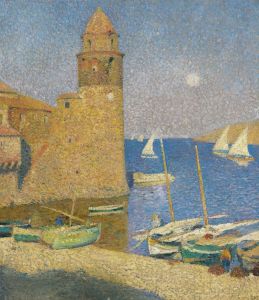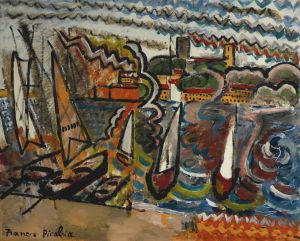
Bucht von Messene
A hand-painted replica of Ludwig von Hofmann’s masterpiece Bucht von Messene, meticulously crafted by professional artists to capture the true essence of the original. Each piece is created with museum-quality canvas and rare mineral pigments, carefully painted by experienced artists with delicate brushstrokes and rich, layered colors to perfectly recreate the texture of the original artwork. Unlike machine-printed reproductions, this hand-painted version brings the painting to life, infused with the artist’s emotions and skill in every stroke. Whether for personal collection or home decoration, it instantly elevates the artistic atmosphere of any space.
Ludwig von Hofmann (1861–1945) was a prominent German painter and graphic artist associated with the Jugendstil movement, which is the German counterpart to Art Nouveau. His work is characterized by its vibrant use of color and its exploration of themes related to nature, mythology, and the human form. One of his notable works is "Bucht von Messene" (Bay of Messene), which reflects his distinctive style and thematic interests.
"Bucht von Messene" is a painting that exemplifies Hofmann's fascination with idyllic landscapes and classical antiquity. The painting captures a serene and harmonious scene, likely inspired by the Mediterranean landscapes that Hofmann admired. The title suggests a connection to Messene, an ancient city in the southwestern part of the Peloponnese in Greece, known for its rich history and archaeological significance. This connection to a historical and mythological location is typical of Hofmann's work, as he often drew inspiration from classical themes and settings.
The painting is characterized by its use of soft, luminous colors and fluid forms, creating a dreamlike atmosphere. Hofmann's technique often involved a delicate interplay of light and shadow, which can be seen in the way he renders the natural elements in "Bucht von Messene." The composition likely includes elements such as the sea, sky, and possibly figures that blend harmoniously with the landscape, reflecting Hofmann's interest in the unity between humanity and nature.
Hofmann was part of the Berlin Secession, an art movement that sought to break away from traditional academic art and embrace more modern and experimental approaches. His work, including "Bucht von Messene," reflects the ideals of this movement through its emphasis on aesthetic beauty and emotional expression. The painting's style and subject matter also align with the broader Jugendstil movement, which emphasized organic forms, natural motifs, and a sense of fluidity.
Throughout his career, Hofmann's work was celebrated for its beauty and its ability to evoke a sense of timelessness and tranquility. "Bucht von Messene" is a testament to his skill in capturing the essence of a place and imbuing it with a sense of mythological and historical significance. While specific details about the painting's creation and current location may not be widely documented, it remains an important part of Hofmann's oeuvre and a reflection of his artistic vision.
Ludwig von Hofmann's legacy continues to be appreciated for its contribution to early 20th-century art, and "Bucht von Messene" stands as a representation of his unique ability to blend classical inspiration with modern artistic techniques.





